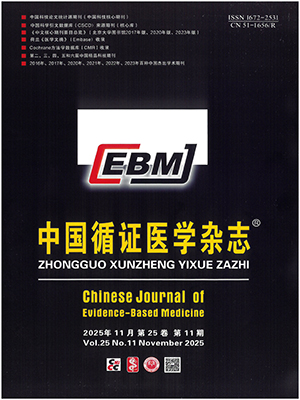| 1. |
Richard B, William D James, Harry L. ArnoldAndrew’s Diseases of the Skin: Clinical Dermatology. 8rd edition. W.B. Saunders Company, 1990.
|
| 2. |
Greaves MW. Chronic urticaria. N Engl J Med, 1995, 332(26): 1767-1772.
|
| 3. |
Sabroe RA, Greaves MW. The pathogenesis of chronic idiopathic urticaria. Arch Dermatol, 1997, 133(8): 1003-1008.
|
| 4. |
O’Donnell BF, Lawlor F, Simpson J, et al. The impact of chronic urticaria on the quality of life. Br J Dermatol, 1997, 136(2): 197-201.
|
| 5. |
Ortonne JP, Grob JJ, Auquier P, et al. Efficacy and safety of desloratadine in adults with chronic idiopathic urticaria: a randomized, double-blind, placebo-controlled, multicenter trial. Am J Clin Dermatol, 2007, 8(1): 37-42.
|
| 6. |
DuBuske L. Desloratadine for chronic idiopathic urticaria: a review of clinical efficacy. Am J Clin Dermatol, 2007, 8(5): 271-283.
|
| 7. |
Nettis E, Colanardi MC, Paradiso MT, et al. Desloratadine in combination with montelukast in the treatment of chronic urticaria: a randomized, double-blind, placebo-controlled study. Clin Exp Allergy, 2004, 34(9): 1401-1407.
|
| 8. |
Geha RS, Meltzer EO. Desloratadine: A new, nonsedating, oral antihistamine. J Allergy Clin Immunol, 2001, 107(4): 751-762.
|
| 9. |
Bousquet J, Bindslev-Jensen C, Canonica GW, et al. The ARIA/EAACI criteria for antihistamines: an assessment of the efficacy, safety and pharmacology of desloratadine. Allergy, 2004, 59 Suppl 77: 4-16.
|
| 10. |
Bonini S. Desloratadine: a new approach in the treatment of allergy as a systematic disease--pharmacology and clinical overview. Introduction. Allergy, 2001, 56 Suppl 65: 5-6.
|
| 11. |
Jadad AR, Moore RA, Carroll D, et al. Assessing the quality of reports of randomized clinical trials: is blinding necessary? Control Clin Trials, 1996, 17(1): 1-12.
|
| 12. |
周汛, 李惠, 王娟. 地洛他定與氯雷他定治療蕁麻疹臨床對比觀察. 重慶醫科大學學報, 2003, 28(1): 78-79.
|
| 13. |
顧軍, 溫海, 等. 地洛他寧治療慢性特發性蕁麻疹的療效及安全性研究. 中國皮膚性病學雜志, 2002, 16(4): 227-229.
|
| 14. |
蘭長貴. 地洛他定治療蕁麻疹的臨床療效和安全性. 中國新藥雜志, 2002, (08): 631-633.
|
| 15. |
王克玉, 李春陽, 楊森, 等. 地洛他定治療慢性特發性蕁麻疹多中心雙盲對照臨床試驗. 山東大學學報:醫學版, 2005, 43(9): 842-844.
|
| 16. |
鐘華, 郝飛, 等. 地洛地定與氯雷他定治療慢性特發性蕁麻疹臨床觀察比較. 重慶醫學, 2002, 31(11): 1106-1107.
|
| 17. |
鄒耘, 陳興平. 地洛他定治療慢性特發性蕁麻疹的臨床研究. 華中醫學雜志, 2003, 27(2): 75-76.
|
| 18. |
曾躍斌, 胡麗娜, 王恂, 等. 咪唑斯汀與地氯雷他定治療慢性蕁麻疹的隨機單盲對照臨床研究. 嶺南皮膚性病科雜志. 2006, 13(2): 114-115.
|
| 19. |
陳冰, 張華麗, 謝倩, 等. 地氯雷他定與咪唑斯汀治療慢性蕁麻疹的療效和安全性比較. 嶺南皮膚性病科雜志, 2004, 11(3): 240-242.
|
| 20. |
郭義龍, 許敏鴻. 地氯雷他定治療慢性蕁麻疹療效觀察.嶺南皮膚性病科雜志, 2004, 11(2): 130-132.
|
| 21. |
郝飛, 彭振輝, 陳興平, 等. 地洛他定和氯雷他定治療慢性特發性蕁麻疹多中心雙盲對照臨床試驗. 中國皮膚性病學雜志, 2003, 17(4): 233-235.
|
| 22. |
劉恩讓, 張書嶺, 劉妹麗. 地氯雷他定和鹽酸西替利嗪治療慢性蕁麻疹臨床對比觀察. 實用診斷與治療雜志, 2006, 20(4): 246-247.
|
| 23. |
李芃, 姚鵬, 柯冰. 口服地氯雷他定治療慢性蕁麻疹療效觀察. 中華臨床新醫學, 2005, 5(2): 118-119.
|
| 24. |
李占國, 陳燕輝, 田春. 地氯雷他定治療慢性蕁麻疹臨床研究. 皮膚病與性病, 2006, 28(1): 11-12.
|
| 25. |
梁敏奇. 地氯雷他定治療慢性蕁麻疹65例. 皮膚病與性病, 2006, 28(4): 34.
|
| 26. |
邵明賢, 丁文玲. 地氯雷他定片治療慢性蕁麻疹療效觀察. 社區醫學雜志, 2004, 2(2): 87.
|
| 27. |
王剛, 李志武, 古新揚. 地氯雷他定治療蕁麻疹的療效觀察. 嶺南皮膚性病科雜志, 2003, 10(3): 199-200.
|
| 28. |
楊立英, 楊益峰. 咪唑斯汀與地洛他啶治療慢性蕁麻疹的成本-效果分析. 中國基層醫藥, 2007, 14(4): 578-579.
|
| 29. |
張劍聰, 羅中權, 譚飛莉. 地氯雷他定與鹽酸西替利嗪治療慢性蕁麻疹的成本-效果分析. 中國麻風皮膚病雜志, 2007, 23(6): 539.
|
| 30. |
鐘山, 陳永鋒. 地氯雷他定治療慢性蕁麻疹療效觀察. 嶺南皮膚性病科雜志, 2003, 10(3): 162-164.
|
| 31. |
Grob JJ, Auquier P, Dreyfus I, et al. Quality of life in adults with chronic idiopathic urticaria receiving desloratadine: a randomized, double-blind, multicentre, placebo-controlled study. J Eur Acad Dermatol Venereol, 2008, 22(1): 87-93.
|
| 32. |
Di Lorenzo G, Pacor ML, Mansueto P, et al. Randomized placebo-controlled trial comparing desloratadine and montelukast in monotherapy and desloratadine plus montelukast in combined therapy for chronic idiopathic urticaria. J Allergy Clin Immunol, 2004, 114(3): 619-625.
|
| 33. |
Monroe E, Finn A, Patel P, et al. Efficacy and safety of desloratadine 5 mg once daily in the treatment of chronic idiopathic urticaria: a double-blind, randomized, placebo-controlled trial. J Am Acad Dermatol, 2003, 48(4): 535-541.
|
| 34. |
Ring J, Hein R, Gauger A, et al. Once-daily desloratadine improves the signs and symptoms of chronic idiopathic urticaria: a randomized, double-blind, placebo-controlled study. Int J Dermatol, 2001, 40(1): 72-76.
|




